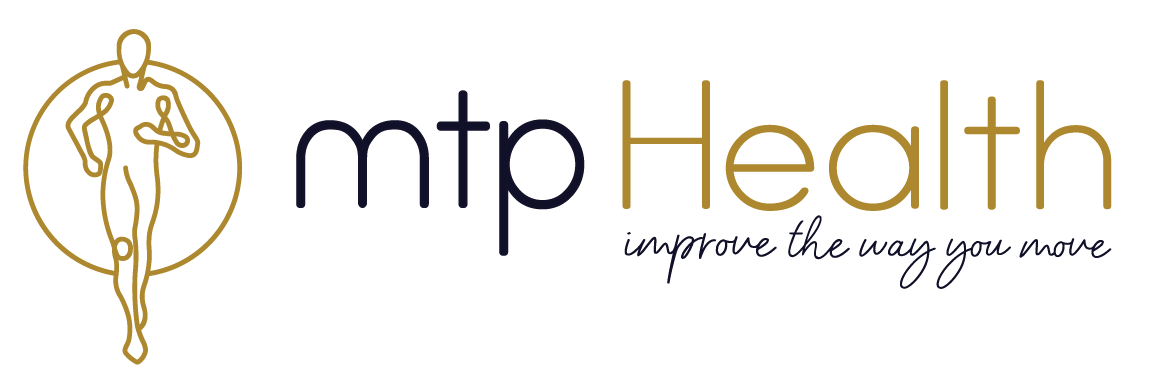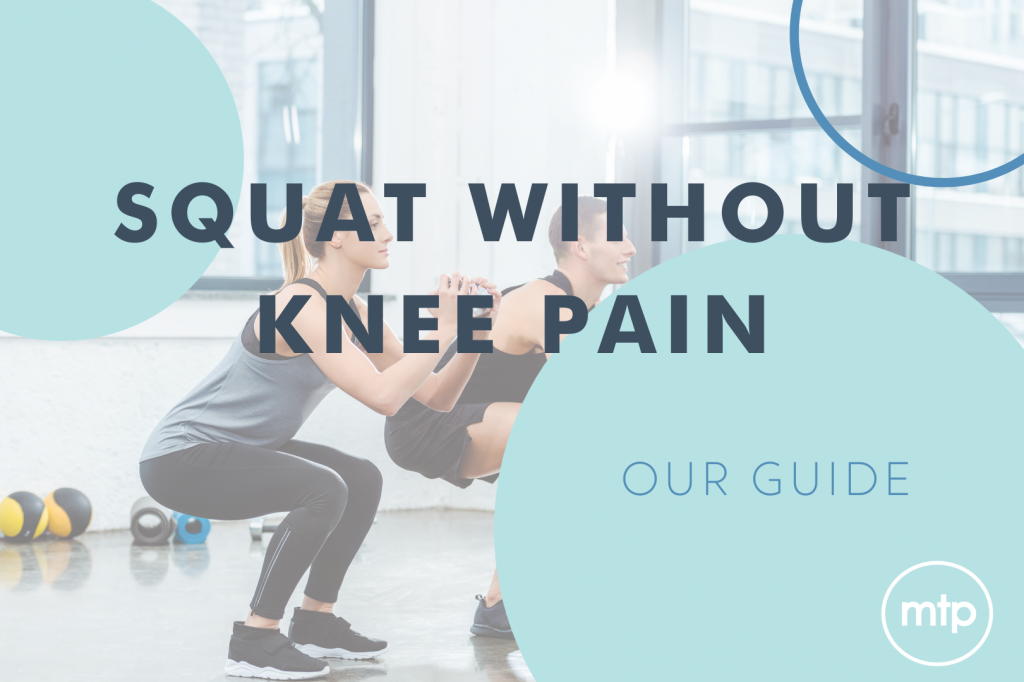How To Squat Without Knee Pain
How To Squat Without Knee Pain
Squats are one of the most popular and effective exercises an individual can do. It’s arguably one of the most effective tools that can be used in under 5 seconds for measuring overall body mobility & movement capacity.
However, they can also be one of the most hazardous with many people experiencing pain during and after their workout. This pain can present itself as discomfort around the knee cap at the tendon attachment points, or in a series of other ways. Knee pain doesn’t really hold any punches, so it’s best not to worry about the specifics of where the pain is. We find that instead, it’s better to focus on the tactics that will free you from it for good!
In this post, we will get to the bottom of exactly how we can do this by delving into the causes, treatment options and how to prevent knee pain while squatting.
The video below (& description in the bio of the video on YouTube) will give a quick summary of the key points to look for when squatting & how to identify if you’re squatting well).
Identifying what causes knee pain while squatting
Squatting is not bad for your knees and it should never cause you pain — in fact not squatting is more likely to be the cause of generalised knee pain. However, people who are not taking the time to squat correctly and those with an existing injury or condition are more likely to experience knee pain. If you’re unsure what may be causing your knee pain, it can be helpful to pay attention to particular cues next time you’re working out:
- Poor hip positioning
One of the most common causes of knee pain, the hips must support and keep the knees in place to prevent them from bending inward and causing tissue damage. A good squat should effectively have the hips travelling back. With this said, good squat form is somewhat unique to the individual, their anatomy & their current level of load tolerance. It can always be a good rule of thumb to chase a mechanically sound position, but a lack of position should never deter you from continuing to train.
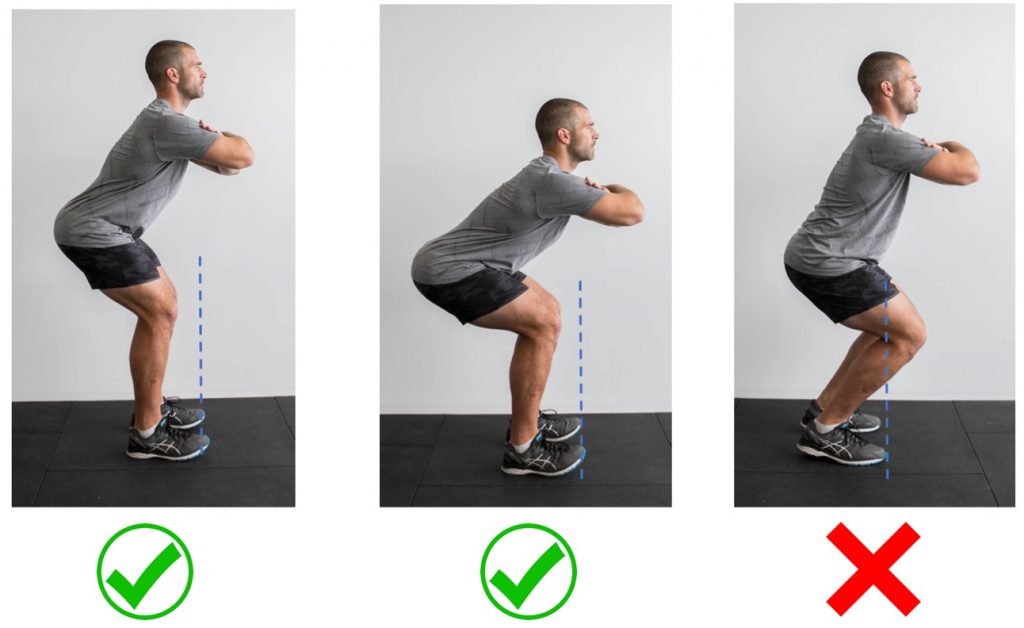
When knee pain is a concern, ensuring the hips do most of the movement & keeping a vertical shin can minimise excess stress on the knee. [CREDIT: Subiaco Physiotherapy]
- Stiff ankles
During a squat, the ankles need sufficient mobility to ensure proper weight distribution. Stiff ankles force the body to compensate which interferes with proper alignment and puts pressure on the knees. A great way to alleviate the issue that stiff ankles poses (which will also help tremendously with hip position) is to elevate the heels when squatting. This helps to put our joints in a more biomechanically favourable position, so we can transmit force through our lower limbs more effectively. This does however put slightly more stress on the knees, so loads should be lightened to ensure the movement is pain-free & gradually progressed over time, to allow the knee joint to adapt to these loads (allowing your knee to adapt it the key to becoming pain-free over the long term).
A great drill to gradually improve ankle mobility over time can be found here. We recommend doing this drill or similar mobilisation work before every single squat session to gradually cement in deeper ranges of motion for your ankle joint & help to continue to improve your mobility as you train. This will make a dramatic difference to your pain.
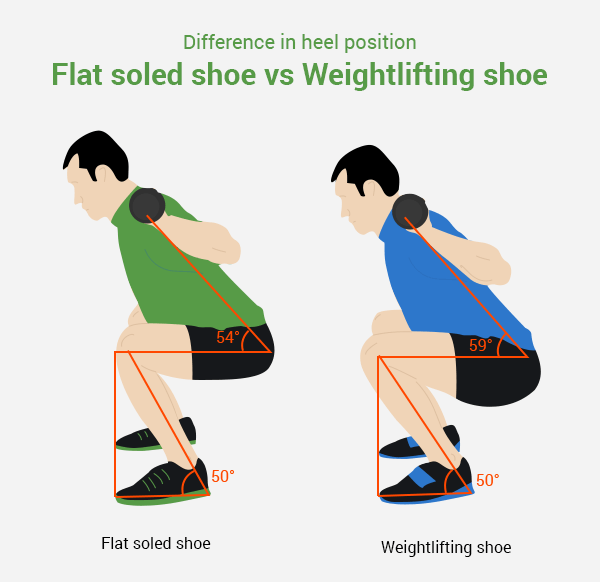
Weightlifting shoes serve the purpose of elevating the heels & place the body in a more biomechanically favourable position to handle loads
- Allowing your weight to shift forward
Leaning forward during a squat will transfer too much of your body’s weight onto the knees and back, placing significant excess forces on the patellar ligament & lower back. While this isn’t always a big deal for those without pain, due to it not being a mechanically sound position, it can lead to exacerbation of pain & exposure of our tissues at their weaker points (which means potential injury). By elevating the heels & positioning hips properly from the beginning, we can help to ensure that we are able to stay on balance & not shift our weight forward. The ability to control a squat position requires good overall mobility & body control.
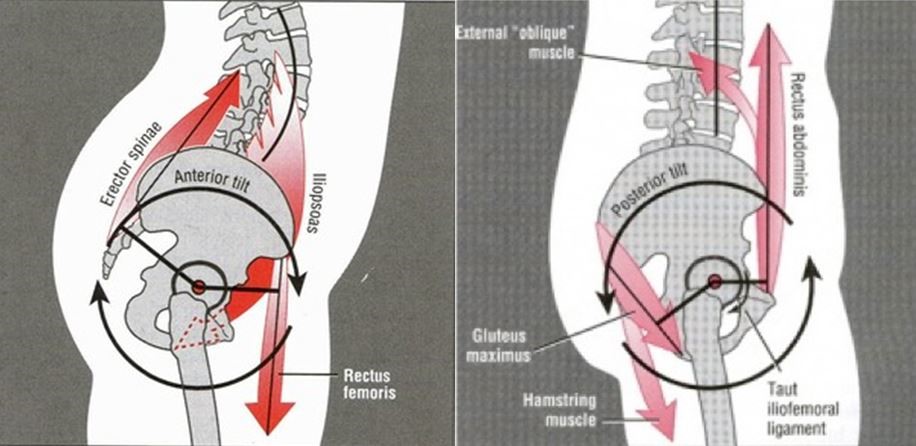
Leaning too far forward on the squat can cause excess shearing force on the back & leave the back more susceptible to biomechanically unfavourable positions such as the hip roll
How to prevent knee pain while squatting
Before you begin squatting, take the time to warm up your muscles. The simple act of stretching will help mobilise the joints and increase blood flow — better preparing the body for a squat. Be sure to focus on stretches that target the ankle to extend your range of motion. Another simple preventative measure is mobilising the calves and shins right before you start squatting (either with a roller OR percussive device such as the Theragun). This will ensure, everything is properly prepared before moving.
Once this is taken care of, you can pay attention to the cues we mentioned above & focus on your technical execution/ improving your mobility to be able to squat optimally.
What a pain-free squat should look like
If you’d like to know how to avoid pain when squatting, the other major factor to consider is your form. The feet should always remain flat on the floor in the foot tripod position. Hip width will vary based on comfort. A good rule of thumb to initiate the squat should be to engage the hips by picturing that you are sitting back in a chair. This technique will help stabilise you, allowing you to deepen your squat and keep your centre of gravity safely above the knees.
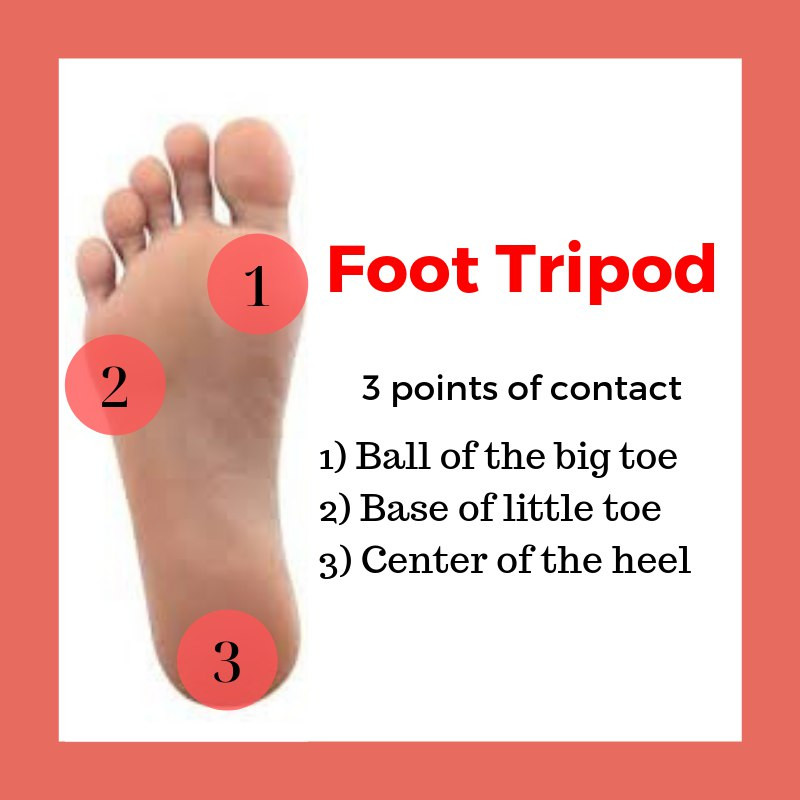
The foot tripod provides a great visual of how we should focus to distribute or weight when squatting
For greater balance & stability without external resistance, hold the arms out in front of you and only go as low as you feel comfortable. When you’re doing this, it can be good to check form via delayed feedback to be sure the spine is in a neutral position, thighs are parallel or greater to the floor and the hips, knees, and toes are all pointing roughly straight ahead (some people may find a slight turn out more comfortable). For extra support, you can also try squatting against a wall, experimenting with a wider squat stance and/or pointing your toes out more.
It’s time to live without pain
We hope this article has provided you with some useful information to help you squat without pain.
The general summary of what causes knee pain when squatting is basically this: when your tissues aren’t strong enough to tolerate the force you’re applying to them or your body feels threatened in any way, then pain will likely arise.
With this said, what we find that is contributing to the first element, or lack of strength is a lack of movement or poor movement quality. For the second element (our body feeling threatened), it’s more an issue of how we’re moving. Typically the ‘how’ comes down to a lack of the fundamental qualities of the movement hierarchy (particularly mobility & stability – read more about this entire concept in detail here)
At MTP Health, our goal is to improve the way you move, so you can do more of the things you love without injury or pain. We believe in teaching people how to squat without knee pain because our entire philosophy is focused on improving our clients lives through empowerment, education and movement.
With this said, our comprehensive guide to moving with pain-free knees is likely your best place to start when it comes to treating your knee pain. If you want something a little more specific, then that’s where we come into the fold!!
Through progressive and continuous evaluation during our physiotherapy and rehabilitation programs, we empower our clients to do the things they love with less pain and more joy. If you’ve enjoyed these tips & want something a little more specific, we’re here to help. Whether you’re after a 1 on 1 or group session or would like to get started with our telehealth services, get in touch with us today and a member of our friendly team will get back to you as soon as possible.
